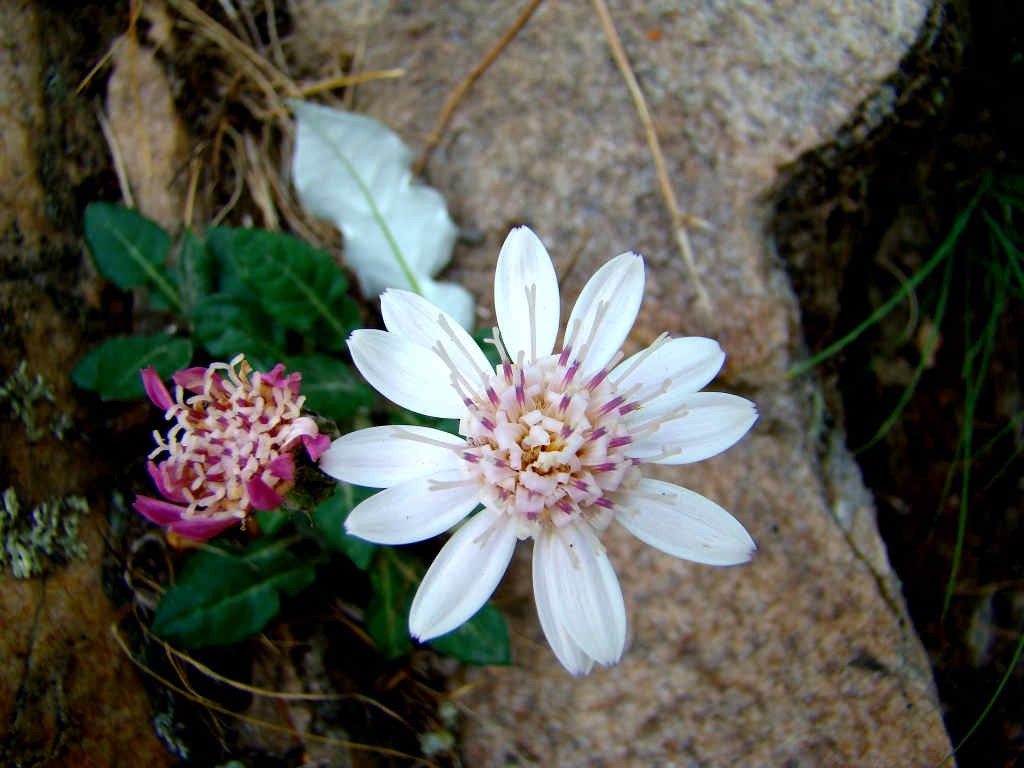
Gerbera gossypina (Kopara)
Gerbera gossypina, commonly known as Kopara, is a beautiful and rare flowering plant that belongs to the Asteraceae family. This species is native to the Himalayan region, particularly found in the Great Himalayan National Park (GHNP), where it adds to the park’s vast floral diversity.
Natural Habitat and Occurrence in GHNP
Gerbera gossypina (Kopara) is typically found at altitudes between 2,500 and 3,500 meters in temperate forest zones and alpine meadows. It thrives in the moist, well-drained soils of Himalayan slopes where the climate is cool and the environment remains undisturbed. In the GHNP, it grows among other high-altitude species such as Rhododendron, Primula, and Aconitum, contributing to the region’s rich botanical composition.
Botanical Description
Kopara is a perennial herb that features vibrant, daisy-like flowers in shades of white, pink, or yellow. The flowers bloom during the spring and early summer, brightening the alpine meadows. The plant has broad, soft leaves that form a rosette at the base. Its stems are typically short, and it produces small seeds that are dispersed through the wind or by insects, which pollinate its flowers.
Ecological Role
Gerbera gossypina plays an important role in maintaining the Himalayan ecosystem. As a nectar source for pollinators, it supports bees, butterflies, and other insects that contribute to the pollination of various alpine plants. Additionally, it helps in soil stabilization, preventing erosion in the mountainous terrains of the GHNP. Its bright flowers also provide a visual display, contributing to the ecological aesthetics of the area.
| Local name | Kopara |
| Botanical name | Gerbera gossypina |
| Family | Asteraceae (Sunflower family) |
| Description and uses | Hairy Gerbera Daisy is a slender herbaceous plant commonly seen on open grassy slopes of the Himalayas. The daisy-like flower-head is generally white in color and lightly tinged with pink. It always grows singly on a long cottony leafless stem, above the leaves. The leaves, all at the base, are also 2-6 in long and ½-3 in broad, smooth and shining above, densely cottony beneath, lance-like, often pinnately lobed at the base. It is found at altitudes of 1200-2400 m. Flowering: March-June. |
Medicinal and Cultural Significance
While Gerbera gossypina (Kopara) does not have a long history of medicinal use, it holds cultural significance in local Himalayan communities, particularly for its beauty and use in traditional landscape gardens. Its flowers are often used in festivals and celebrations in the region, symbolizing purity and beauty.
Conservation Status
Gerbera gossypina is not considered to be endangered; however, its population is limited due to its specific habitat requirements and the sensitivity of its environment. The Great Himalayan National Park plays a vital role in preserving this species by maintaining its natural habitat. Conservation efforts focus on protecting the delicate alpine ecosystem where Kopara grows and ensuring that this flower thrives in its native environment.
Conclusion
Gerbera gossypina (Kopara) is a stunning example of the Himalayan flora, admired for its beauty and ecological importance. Its presence in the Great Himalayan National Park highlights the park’s role as a sanctuary for diverse plant species. The protection of its habitats is essential for ensuring that Kopara continues to bloom in the pristine Himalayan meadows, maintaining the delicate balance of this rich and biodiverse ecosystem.



